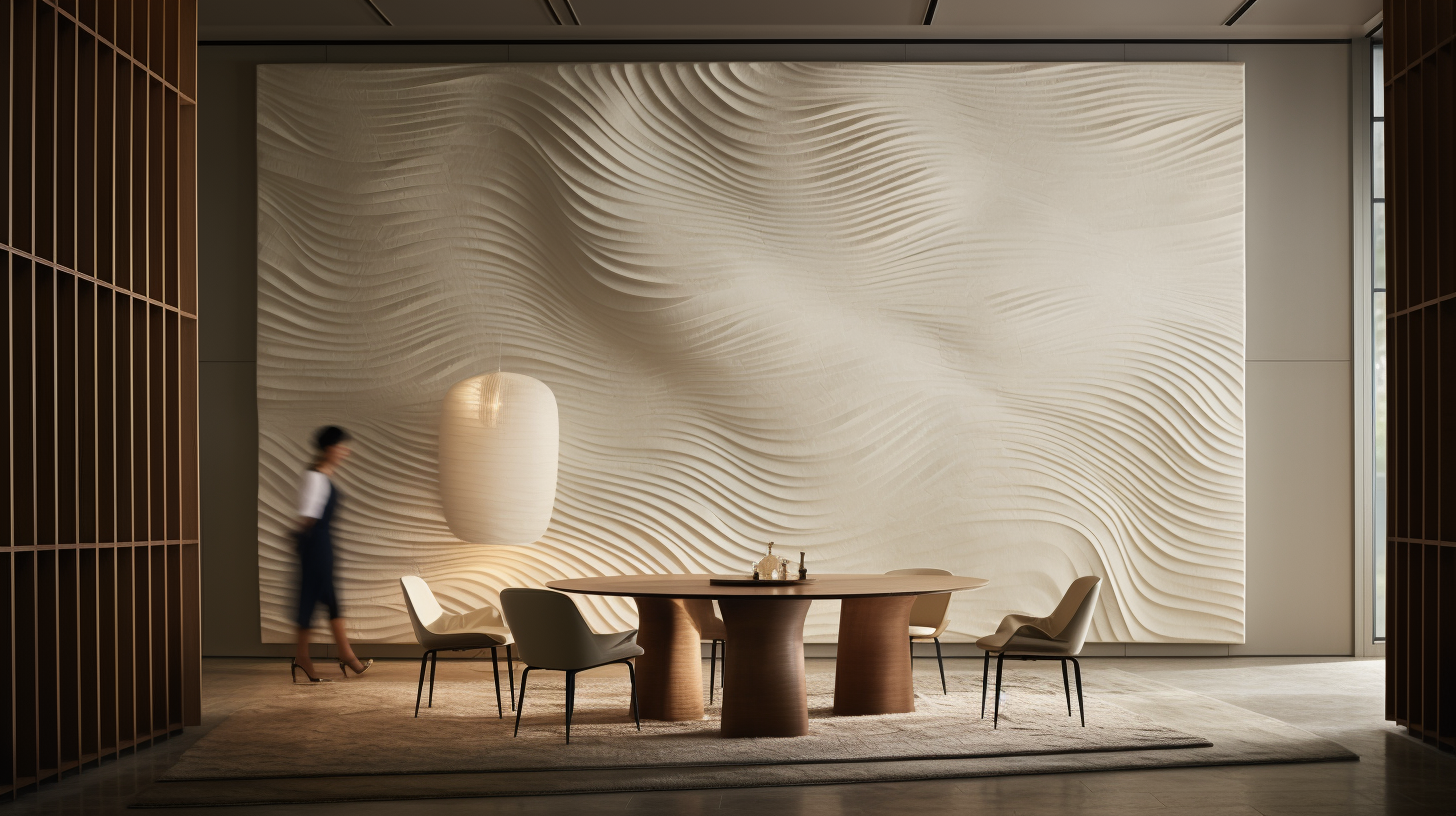Imagine you’re in the midst of building your dream acoustic panels—panels that not only look good but also perfect the sound quality of your space.
You’re now faced with a critical choice: the fabric that will wrap around these panels.
Understanding the nuances of different fabric options like Guilford of Maine, Cotton Duck Fabric, and specialized fabric-wrapped panels is more than a matter of aesthetics
It’s a complex decision that influences sound quality, durability, and even the budget of your project.
So, how do you make the right fabric choice for your custom acoustic panels?
Let’s dive in to explore key factors and unique options, including the versatile polyester acoustic panels.
1. Guilford Of Maine Fabric

Guilford of Maine is a revered name in the world of acoustic panel fabrics. Known for its high-quality and aesthetically pleasing fabric options, it holds a solid market position.
The fabrics from Guilford of Maine are especially favored by those seeking custom-made solutions.
The availability of a variety of styles ensures that there’s something for everyone, catering to different aesthetic preferences.
This brand specializes in acoustic panel fabric, ensuring that the materials possess the right acoustic properties.
Unlike nylon fabrics, which tend to soak up humidity and sag over time, Guilford of Maine fabrics are designed to endure such issues.
They have garnered a reputation for durability, making them a trusted choice in the DIY audio panel community.
Many customers rave about the quality and longevity of these fabrics, some of which are even bleach cleanable for easy maintenance.
The primary drawback of opting for Guilford of Maine fabrics is the cost. Given the premium quality and brand reputation, the price tag is on the higher side.
However, for those who value aesthetic appeal and are willing to invest in a niche product, the cost might be a justified trade-off.
It could be a worthy investment for those wanting their acoustic panels to blend seamlessly with the room’s décor.
2. Cotton Duck Fabric

Cotton Duck Fabric is another excellent choice for acoustic panel fabric, known for its affordability and acoustic transparency.
This fabric type is not only budget-friendly but also possesses the right acoustic properties required for effective sound absorption.
It’s woven finer than regular canvas, which is a crucial feature that enhances its acoustic transparency.
The higher thread count allows the fabric to breathe, making it an ideal choice for sound transmission.
Often referred to as “duck canvas” or simply “duck fabric,” Cotton Duck Fabric is also known for its durability.
It stretches well across panels, providing a taut and smooth finish which is essential for both aesthetic and acoustic purposes.
The breathability of this fabric ensures that sound waves can pass through and get absorbed effectively.
Furthermore, the durability of Cotton Duck Fabric means it can withstand the test of time, providing a cost-effective solution for those on a budget.
One of the appealing aspects of Cotton Duck Fabric is its high degree of customization. It’s not uncommon to find printed duck canvas that can add a unique touch to your décor.
There are also plain options available for those who prefer a minimalist look.
Since it’s made from cotton, this fabric can be dyed to any color, offering a level of customization that allows for matching with the existing décor.
It’s a smart choice for those who want to keep costs low without compromising on acoustic performance or aesthetic appeal.
3. Acoustic Pro Fabric Wrapped Panels
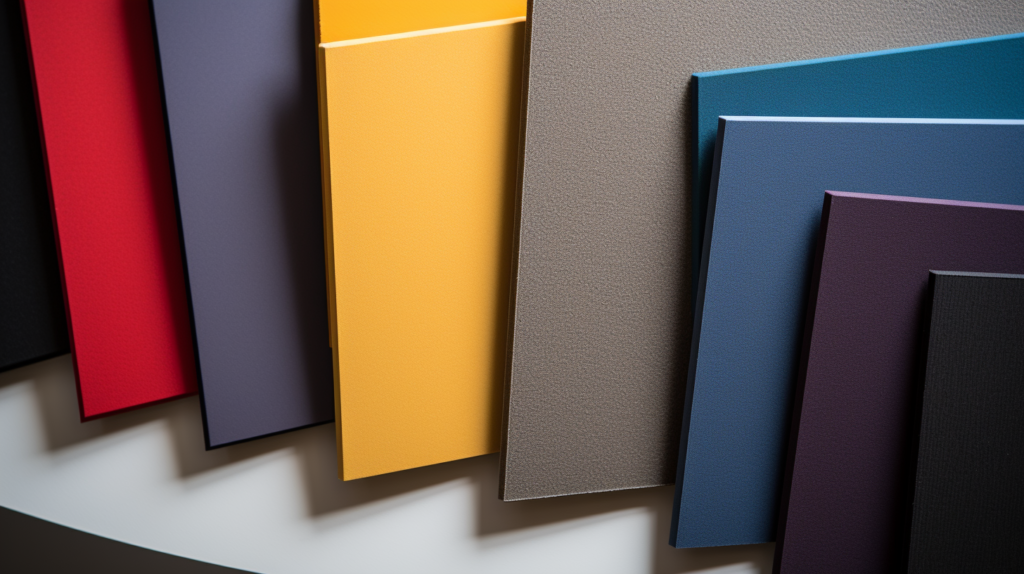
Acoustic Pro Fabric Wrapped Panels are known for their rigid fiberglass core wrapped in acoustically neutral fabric.
This design enhances the panels’ sound-absorbing capabilities while maintaining a sleek appearance.
The use of acoustically neutral fabric like Guilford or FR-701 fabrics ensures that sound waves are effectively absorbed.
It’s a combination of functionality and aesthetic appeal that makes these panels a favorite among many.
The panels are also known for their impact resistance, which is an essential feature for maintaining their integrity over time.
They can withstand the usual wear and tear, making them a durable choice for various settings.
Additionally, these panels are easy to clean, which is a practical feature ensuring they remain aesthetically pleasing over time.
The variety of edge dressings available, such as radius, beveled, half beveled, mitered, or natural squared edged, adds to the aesthetic appeal, offering options to match different interior designs.
4. AlphaSorb® Fabric Wrapped Panels In SoundSuede™ Fabric
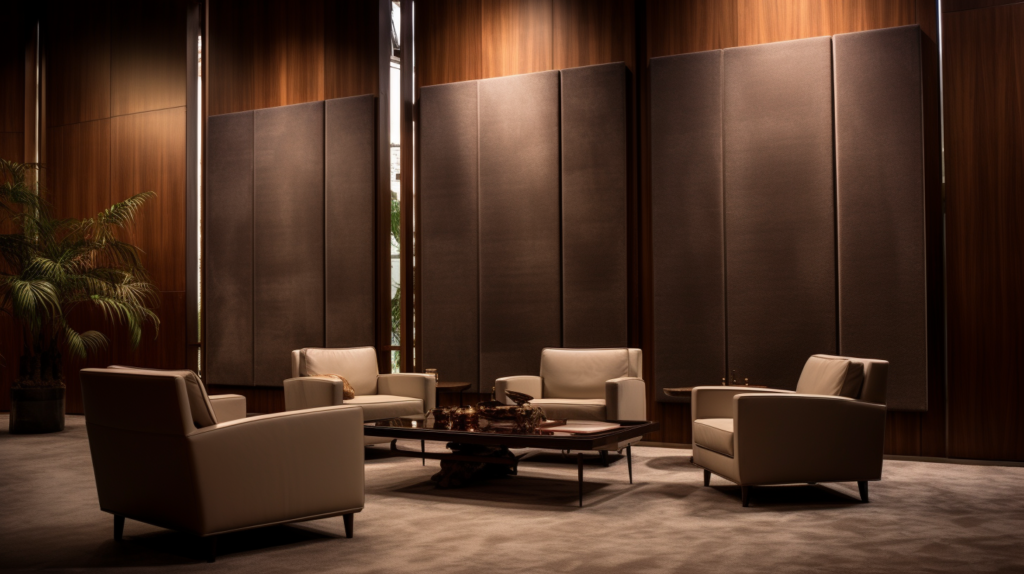
The AlphaSorb® Fabric Wrapped Panels in SoundSuede™ Fabric bring a unique aesthetic appeal to the realm of acoustic panels.
The suede appearance of this fabric adds a touch of sophistication, making it a suitable choice for elegant settings.
The aesthetic appeal of SoundSuede™ Fabric doesn’t compromise its acoustic performance.
It still provides effective sound absorption, making it a functional yet stylish choice for acoustic treatment.
Does Linoleum Make A Good Material For Acoustic Panels?
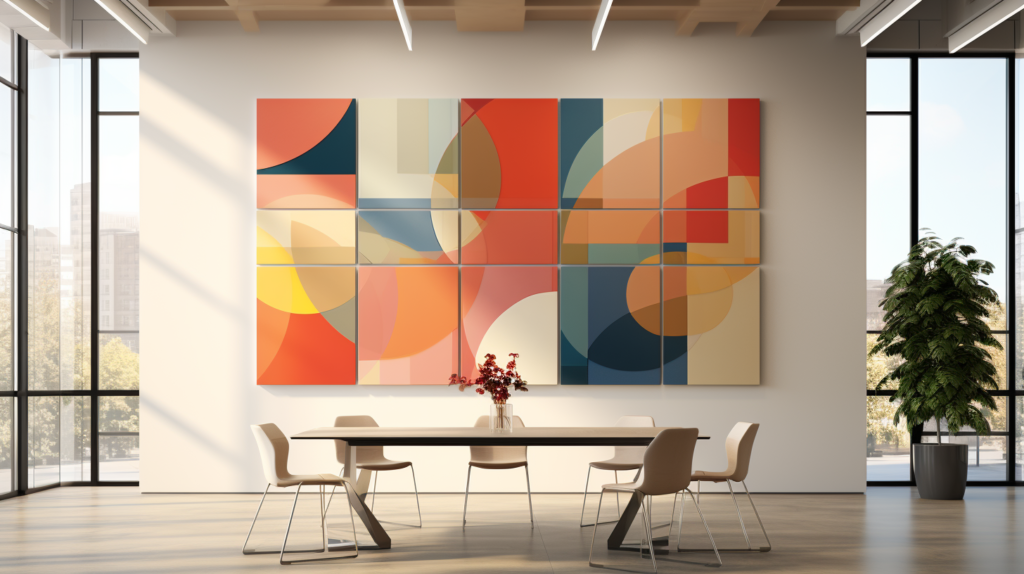
Linoleum is often considered for its durability and eco-friendly composition, but it’s less common in acoustic panel applications.
While durable and easy to maintain, linoleum’s dense, reflective nature makes it less effective for sound absorption.
Although it offers various aesthetic options, it lacks the acoustic transparency that is central to the effectiveness of other materials like Guilford of Maine and polyester acoustic panels.
Therefore, it may not be the best choice for those prioritizing sound quality in their acoustic solutions.
Aesthetic Variations
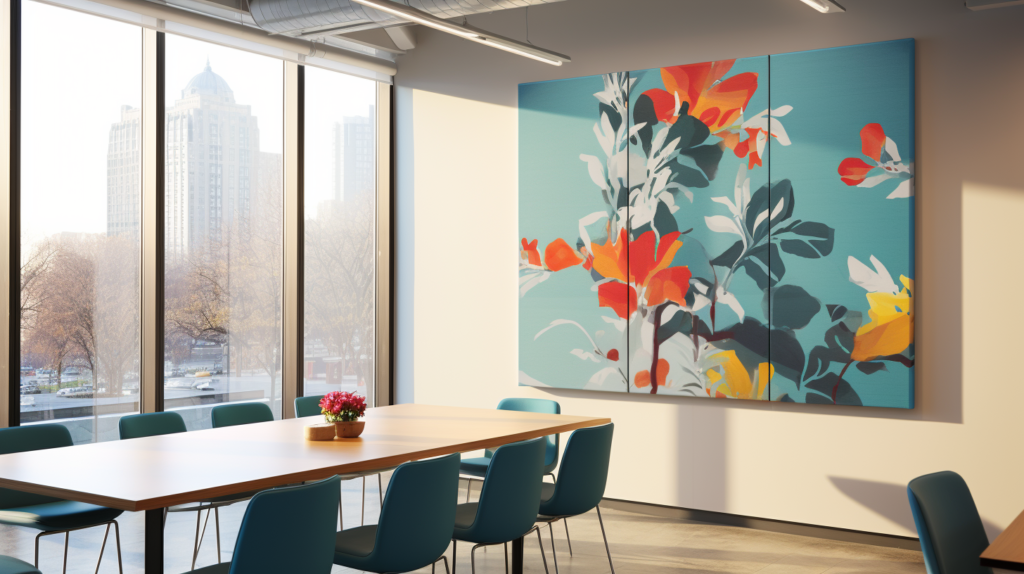
Exploring aesthetic variations in fabric-wrapped acoustic panels leads to exciting possibilities.
For instances where traditional fabric aesthetics may not suffice, options like Inspire Art Printed Panels or Chroma Paintable Panels come into play.
The Inspire Art Printed Panels offer a stretch fabric that is acoustically transparent, with limitless printing capabilities.
This feature allows for a seamless custom aesthetic, especially when a printed image is extended across multiple panels.
On the other hand, Chroma Paintable Panels emulate the look of drywall but with the added benefit of sound absorption.
They can be painted any Sherwin Williams color code with patented acoustically transparent paint.
This feature allows for a high level of customization, enabling the panels to blend seamlessly with the existing décor.
Whether painted in the field or in the factory, a specific painting method is required to protect the acoustic integrity of these panels.
It’s an excellent choice for spaces where aesthetic is a primary focus, allowing for branding, inspirational imagery, or achieving a drywall look without sacrificing sound absorption.
Factors To Consider When Choosing Fabrics
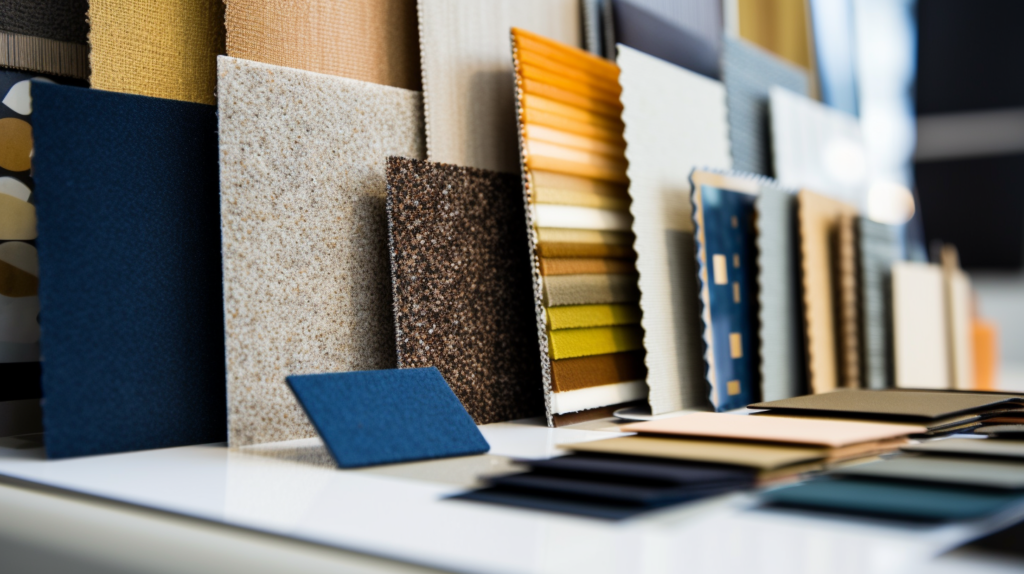
Selecting the right fabric for acoustic panels is a critical decision that impacts both functionality and aesthetic appeal.
Acoustic transparency is a primary factor as it determines how effectively sound waves are absorbed.
Durability is another crucial factor, especially for installations in high-traffic areas where the material will be subjected to wear and tear.
Ease of maintenance is also an essential consideration, as it impacts the longevity and appearance of the panels over time.
Aesthetic appeal cannot be overlooked, especially in spaces where the décor is a priority.
Lastly, budget considerations will play a significant role in the decision-making process.
It’s vital to find a fabric that meets the acoustic needs, aesthetic preferences, and budget constraints of the project.
Conclusion
In conclusion, the choice of fabric for acoustic panels is a nuanced decision with multiple factors at play.
Understanding the different fabric options and their respective advantages and disadvantages is crucial.
It helps in making an informed decision that will meet the acoustic, aesthetic, and budgetary needs of the project. Whether opting for the premium Guilford of Maine fabric.
